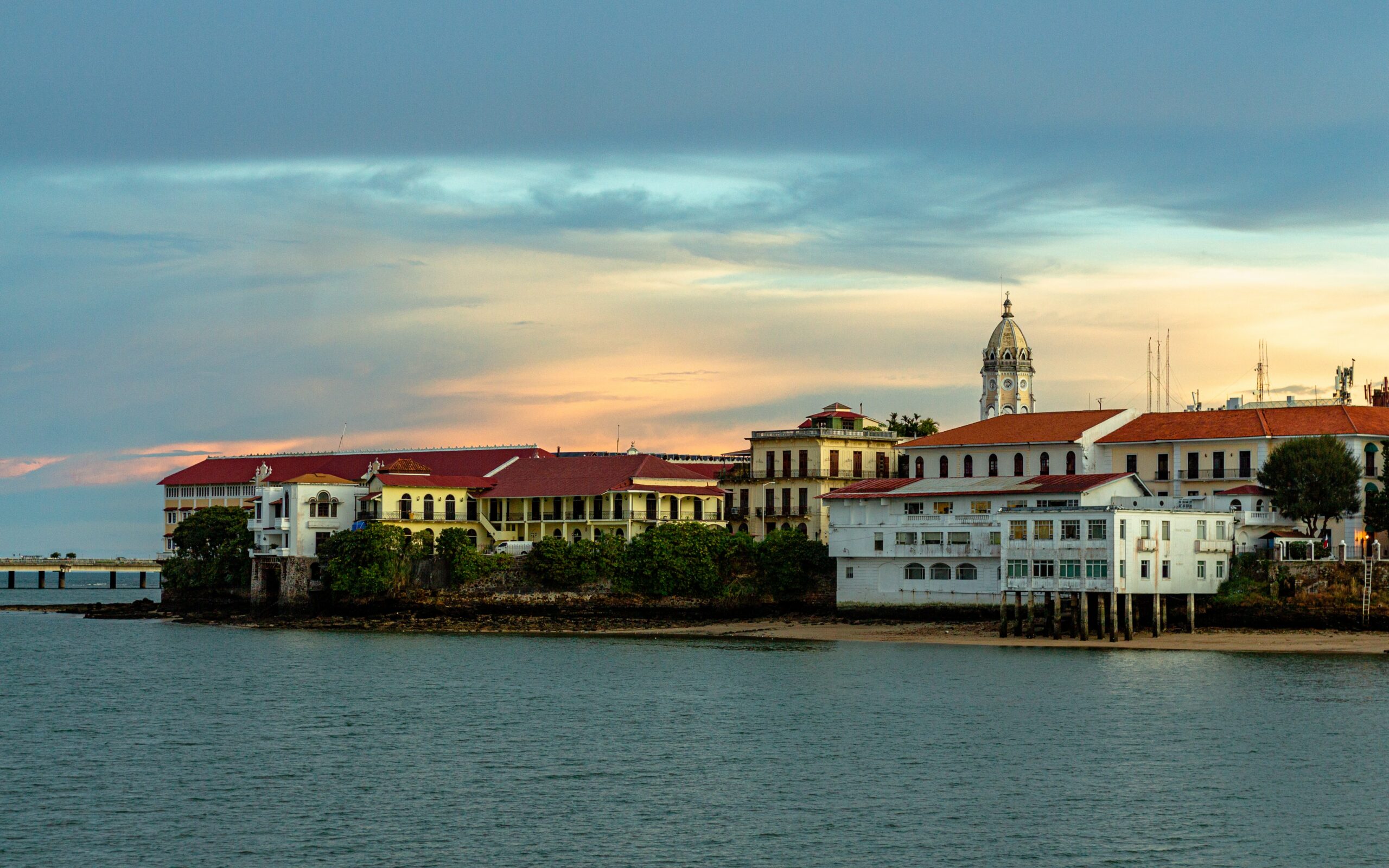To make sure you are tempted to attend our free webinar on how to save on airplane tickets (either live tonight or whenever you want — if you still sign up before tonight), I want to share a sneak peek at 31 tips to save on airplane tickets.
If you really want to learn, you should definitely sign up for our free webinar.
I’ll be sharing our expertise with you for an hour (and then answering your questions); we’re objectively very good at traveling for cheap in general, but ESPECIALLY at finding cheap plane tickets.
So here’s an introduction to our complete guide, which will bring together (and explain well) all the tips on how to save money on plane tickets. There’s a lot more content to come, but I want to share this with you without further ado.
Reminder of the basics of how to travel for less
You can learn the 7 best simple pro tips to travel for less if you download our free ebook on how to travel for less.
The 1st of the 7 tips is to learn how to save money on plane tickets. Because it’s such a variable expense: the same ticket can sell for $500 or $1500 (and that’s normal). Don’t be the person who pays $1500!
If you want to be a pro at cheap travel, it’s a really good idea to learn how to save money on plane tickets.
There are plenty of other ways to save money, of course, but this one is so important that it deserves its own point, and we’re really going to get deep into it on Flytrippers over the next few weeks.
Finally, when it comes to saving money on flights, as with the other 6 most vital tips, there are always 3 important more global things to do to save money:
- Invest time
- Be flexible
- Compare and calculate
The more you can do these 3 things, the more you’ll save on your travels. Including your flights. It’s not rocket science (not always easy, but not complicated as a concept).
How to save on plane tickets
There are many tips for saving money on flights. None of them works 100% of the time, which is why it’s important to take the time to try them all.
I’ve broken down the 31 tips into 3 main steps to follow in that order for any plane ticket you want to buy.
First, take advantage of flight deals.
It’s by far the best way to save money. It’s also the easiest.
Second, if you can’t take advantage of deals, understand the basics of plane ticket prices.
It’s very basic, but that’s precisely why everyone needs to know these. And it’s important!
Finally, in very concrete terms, apply the pro tips to save money on plane tickets.
These tips will help you find much cheaper flights in almost any situation where the basics alone don’t work.
Here’s a teaser (and we’ll have a video and detailed article on each one).
Take advantage of flight deals (3 tips)
The first thing to try.
1. Plan your trips around flight deals
All the tips below will help you if you have a specific destination, but the key is really to be open to many destinations. Our world is full of interesting places!
About 99% of people choose a destination first. It’s obviously by far the worst way to save on plane tickets. There’s a reason most people are terrible at finding cheap flights.
When I went to Lebanon for $390 roundtrip, or Singapore for $499 roundtrip, or South Africa for $550 (all prices from Montréal that Flytrippers spotted for you on our cheap flight deals page and that I also bought myself obviously)… I obviously didn’t plan to necessarily go there.
I was open to several destinations and jumped on it when the deal came up. I’ve loved all these trips… and I’ve saved a lot on plane tickets!
Just plan your trips around good half-price deals if you want to save on tickets. There are always plenty of good deals!
2. Pre-approve your destinations and dates in advance
To take advantage of the deals, you need to be prepared. It’s not difficult, you just need to make a list of destinations that interest you (in advance)! Anyone can do it. For dates, it’s always best to at least have a general idea of when you can leave.
Because deals go fast, so when one comes up, all you have time to do is find dates that work for you and book, nothing else. If you start wondering whether you want to go to this place or not, you’ll miss out on the deal.
It’s so easy to ask yourself these questions beforehand, so just do it!
3. Book the deal quickly
You have to be quick for deals. They often last a few hours, or maybe a day if you’re lucky. Rarely more than that. The better the deal, the faster it goes.
Even the best dates go fast, because only a few seats are available for each date. You can’t wait if you want to take advantage of it.
Here are 4 tips to be able to book the deal fast:
- Follow us on Facebook
- Select “Favorites” in the settings of our Facebook page
- Sign up for our free newsletter
- Tell your travel buddies so they can share a deal with you if you miss it
Understand the basics of plane ticket prices (17 tips)
It’s more general, but very important to understand.
4. Take an interest in travel rewards
So many people don’t pay for all their flights. It’s the easiest tip. Our Flytrippers readers have now earned over 2 million dollars in free travel rewards, which is a lot!
It’s so easy to earn hundreds of dollars in free travel every year with travel rewards (while improving your credit score and getting lots of other great benefits, like insurance and travel perks like airport lounge access).
For example, the CIBC Aventura Gold Visa Card gives you $513 for free and you can apply it to any flight booked on any site (and it gives you 4 free airport lounge passes)! Very simple! The CIBC Aventura Visa Infinite Card is the version for those who earn more than $60,000.
If you earn more than $60,000, there’s one that gives you even more free flights: the TD First Class Travel Visa Infinite Card. It gives you $650 for free and can be used for any flight booked on their platform (almost all flights are there). Pretty simple too.
If you want, Aeroplan points are even more valuable (but so necessarily less simple). The TD Aeroplan Visa Infinite Card gives you ≈ $941 in net value in the form of discounts on specific flights (the American Express Aeroplan Card is for those who don’t earn $60,000 and gives you a bit less).
In short, it’s easy to get lots of free flights this way. That’s the beauty of welcome bonuses! It’s a lot better than a terrible 1% or 2% rate on an old card (or worse; throwing money in the garbage when paying by debit).
And at the very least, if you don’t yet have enough points (one of the most common mistakes), always use your airplane ticket purchases to help you reach the minimum amounts required to unlock welcome bonuses.
You can read our new infographic which summarizes the basics of travel rewards in one page.
By not doing what everyone else thinks is too good to be true without researching further, you’ll easily save a lot on your flights.
5. Understand how airplane ticket pricing work
So many people have no idea how pricing mechanisms work. It’s normal if you’re not familiar with this world, which is very different from all other industries.
For example, ticket prices have NOTHING to do with these 3 elements:
- The distance traveled
- The number of flights in the itinerary
- The itinerary’s operating costs
Understanding this is essential, so that we can understand how to get around it with all the tips.
The price of a ticket simply represents the maximum amount the airline thinks it can charge you for a specific itinerary on specific dates (at the specific moment you’re shopping for it). Never more, never less. Nothing else is taken into account.
So it varies enormously and often! You have to understand that.
6. Ignore the myths and check prices early and often
There’s no specific time of day or specific number of weeks before your flight that will magically allow you to find cheaper flights.
Those “tricks” make for great clickbait on non-expert sites (like setting your browser to private mode), but the reality is that ticket prices always vary so much! There are general rules, but none apply to all destinations and dates.
Check prices early to get an idea of the prices. Check prices often to see how the prices change. No secret recipe, just some time to put in.
As for deciding which price is right, it all depends on your flexibility once again.
If you’re dead set on leaving on precisely the 23rd and on direct flight X precisely and you have no flexibility on anything, your chances of saving are simply nil (apart from using your travel rewards of course). So you’re often better off booking earlier (generally about 2-3 months before short-distance flights and 3-6 months before long-distance flights, but I want to again repeat that it varies soooo much).
If you’re a little flexible, you can wait longer. If you’re very flexible, you can wait even longer. Flexible on everything, not just the date.
But price variations will work differently for literally all dates and destinations, and so will pricing mechanism patterns…
7. Be flexible on the dates OR the destination
If you can’t find a deal, being flexible on EVERYTHING is key as I said. But especially on at least 1 of these 2 elements if you want to find cheap flights.
If you absolutely have to travel on specific dates, no problem. There will almost always be cheap flights to certain destinations.
If you absolutely must travel to a specific destination, no problem. There will almost always be cheap flights for certain dates.
But finding cheap flights to a specific destination on specific dates randomly… that’s going to happen very rarely. Hence the importance of all the other tips in these situations.
8. Be flexible about the specific day of the flights
Without changing the dates of your entire trip, at least be flexible by a few days.
Leaving on Saturday can be half the price of leaving on Friday. It varies enormously.
Use the Kiwi tool for several date range search options.
9. Be flexible on flight times
The least desirable flight times will almost always be the cheapest.
Always compare everything and make decisions accordingly if you want to travel for less.
10. Compare all airlines
Never go directly to an airline’s website to do your research (not talking about your reservations, your research)!
Always use a site that compares all the airlines to see which one is the cheapest for your dates and destination, like Kiwi or Skyscanner.
No airline is going to be the cheapest for all routes and all dates. Impossible. Not even ultra low-cost carriers (ULCCs). That’s why it’s important to compare.
11. Compare all booking sites
Different booking sites often have different prices too. You should compare them!
The tools that let you do this are called aggregators or metasearch sites.
The Skyscanner tool is our favorite, and compares around 40 different booking sites. So even though Kiwi is often the best tool for more advanced searches to find the best flights, it’s worth then doing another search on Skyscanner to compare prices across multiple sites.
12. Always book on the airline’s website
At least… when the price is equal. Sometimes independent online booking sites have lower prices, in that case it’s up to your level of risk tolerance. And it’s often worth it if the price difference is huge.
But for the same price, there’s NO advantage to having an intermediary. It complicates everything. That includes physical travel agencies, by the way.
It’s just always better to book directly with the airline on their official website. If something goes wrong about your trip, you can deal with them and only them. Way better.
So you search on the aggregators but you book on the airlines’ sites directly.
13. Get over not wanting a connection
The simplest and most basic way to save money is to choose a flight with a connection. They’re almost always much cheaper, especially for more distant destinations.
You get off the plane, sit for a while, get back on the plane. You’re going to survive. And so will your children, if you have any. Guaranteed!
Everyone can do it, and it’s often hundreds of dollars in savings! It’s true that it takes a little longer, but you really have to get over it if you want to save.
(And if you just want to be a real traveler too! At some point, that is a bit incompatible with limiting yourself to exploring just the very few destinations that arbitrarily happen to be served from the airport where you live…)
14. Travel light
Another very basic trick is to take less stuff with you. You’re entitled to 2 free carry-ons with almost all airlines, specifically a full-size carry-on and a backpack to put under the seat in front of you.
I’ve been to 67 countries and haven’t needed more than that (not even once), so unless you’ve got special equipment or are bringing lots of stuff back to your family in another country, you can do it too. It’s also feasible with children, who have the same luggage allowance as adults and much smaller clothes.
You’ll save on baggage fees every time, but it’s also so much faster and more efficient and more enjoyable.
15. Take any seat
You don’t have to pay for a specific seat. Just check in online precisely 24 hours before your flight and you’ll almost always be seated with your travel companions for free.
And in the rare event that they do separate you, you can often pay the same price at check-in if you insist, but at least try to get it for free. It almost always works, at least in small groups.
And if it doesn’t, you’ll survive sitting apart. Don’t pay extra for that if you want to save money.
If you have kids, this one’s a little different unlike connections and baggage, but know that in Canada, the airlines are obliged not to separate you so don’t pay for that! In other countries, they usually try not to separate kids too.
16. Choose the cheapest airline
After taking several dozen different airlines, there aren’t any worth paying much more for.
If you want to travel for less, go with the cheapest. Just make sure you’re comparing apples to apples. If you don’t want any extras, the cheapest is simply the cheapest.
But if you want any extras whatsoever, obviously the inclusions are different with all the different airlines. So choose the cheapest one for the inclusions you want, if you want any. But don’t pay more.
(Apart maybe to choose a major airline instead of a smaller airline: in case of delays/cancelations, bigger airlines can get you back on track faster!)
17. Always choose the cheapest seat classes and fare classes
When it comes to seat classes, it’s a given that economy class will always be the cheapest (except with the more valuable type of travel rewards that allow you to get business class seats worth thousands of dollars for a fraction of the price; don’t miss a new 30-minute express webinar on the subject soon).
But there are fare classes too. These are different options for economy class tickets. The ticket’s inclusions differ, even if it’s the exact same seat. Saying no to all the other extras is obviously the way to travel for less.
18. Pay with a credit card that has free insurance
To avoid paying more for a flexible ticket that has better conditions for changes and cancelations (it’s often much more expensive), choose a ticket and use it as is. Simply don’t change your mind.
And by paying for the ticket with a good credit card, you’ll get free trip cancelation insurance to cover the good reasons at least (don’t miss a new 30-minute express webinar on insurance coming soon).
You’ll also get free hotel and meals if a flight is delayed or canceled, so you don’t have to beg the airline (which often owes you nothing) like those who didn’t take responsibility because they didn’t know. Now you know!
19. Consider the total cost of the flight
Flight prices always include taxes and mandatory fees. But consider the whole cost of choosing each flight, like transportation and accommodation.
If you save $50 on the flight, but arrive late at night (or leave early in the morning) when the mass transit at your destination is no longer operating and you have to take one of the most overpriced scams in the travel world (airport taxis/Ubers), it’s still going to cost you more in total (except sometimes with several companions… again, take into account the costs for your specific situation if you’re not traveling solo: calculate).
The same goes for your departure airport, if you’re leaving too early and that makes you lose having someone to take you to the airport, or if mass transit isn’t operating.
If you’re going to New York and you choose to fly to Kennedy airport instead of LaGuardia, the cost of transportation is not the same. If you’re on an itinerary that will bring you to many cities once you’re there and want to rent a car, car rentals can be much cheaper in one city than in others. In short, calculate everything.
As for accommodation, sometimes an early flight is cheaper, but you’ll have to spend a night at an airport hotel (which are often very expensive). Simply compare the total cost of everything involved in choosing your flight… not just the flight itself.
20. Look at the whole equation for the trip
Not a tip for airfare per se, but too vital not to mention since it still has to do with airfare.
Maybe the flight is $500 cheaper to Hawaii than to Bali. But in Bali, you can get accommodation for as little as $20 a night, and in Hawaii… it’s slightly more expensive.
In short, it’s great to save on airfare. But you have to take the whole equation into account and look at the total price of the trip, not just the airfare.
Sometimes it’s actually better to pay more for a ticket to pay less overall for the trip!
Apply the pro tips to save on plane tickets (11 tips)
Here are the tips that tell you what to do when the basics don’t help you find cheaper flights.
(We’ll be talking a lot about these in our free webinar on how to save on airfare!)
21. Use more valuable points to get outsized/unlimited value
If you’ve planned ahead (it’s 1 of the 6 basics of travel rewards), you can use your stash of more valuable travel rewards for flights that are very expensive with cash.
You’ll save big! Much more than with more simple travel rewards that have a fixed value.
Because with many types of points, the number of points required is completely independent of the price in cash!!! That’s the unlimited and outsized value.
To give an extreme example that illustrates it well (even if it’s not as practical), flights from Montreal to the Nunavik region of Northern Québec are very expensive with cash, often $3,000 roundtrip. But they always cost just 20,000 Aeroplan points, regardless of the cash price. While 20,000 Aeroplan points are worth ≈ $300 according to our conservative Flytrippers Valuation, in this particular case you can save $3,000 with those 20,000 points! That’s 10 times more value!
You can read this whole example to understand the principle.
More generally, what that means is that on many routes, if the price of airplane tickets is very expensive with cash, the more valuable points with a fixed number of required points can give you unlimited outsized value!
Not always as much value as to Kuujjuaq, but they often give you literally 2 times more free travel as the more simple points. These points are therefore very valuable for those who want to get a good deal.
22. Book flights with self-transfers
Booking flights on a single ticket often costs a lot more!
I won’t repeat my whole introduction to the self-transfer tip, because I’ve already previewed it in video and text format, given that it’s one of the most important tips for saving money on airline tickets!
23. Check out nearby departure airports
Canada is among the worst countries in the world for airfares. Looking at departures from airports in the USA is worthwhile, especially when flights are expensive. It can save you a lot of money.
For example, if you’re in Toronto, look at departures from Detroit and Buffalo (for long-distance flights) or lots of smaller American airports nearby (for short- and medium-distance flights).
Especially with multiple travelers (the savings of hundreds of dollars per ticket are multiplied by the number of passengers… while the minimal additional costs of getting there compared to going to your regular airport are divided between each passenger).
It could even be other Canadian airports, too. Prices vary enormously and constantly, and on certain dates, other airports may be cheaper.
For example, some people sadly pay $1,200 to fly direct to Costa Rica from Montreal, which is absolutely appalling. There were direct Toronto-Costa Rica flights for $450 roundtrip a few weeks ago. If there are 2 of you, that’s $1500 saved by just driving a few hours…
The Kiwi tool is the best for doing these searches, since it lets you set a distance radius around the airport.
24. Check out nearby arrival airports
It’s the same concept. Let’s say you want to fly to Brussels. Toronto-Brussels tickets can be $1200 roundtrip, but Toronto-Paris tickets can be $600 roundtrip (as is often the case; although currently it’s a bit more expensive).
So you can land in Paris and take the train between the 2 cities. Or any other mode of transportation.
If you want to go to Calgary but tickets to Edmonton are much cheaper, and you were going to rent a car anyway, driving a few hours more on arrival can save you a lot of cash. It’s always worth comparing.
25. Book separate one-ways instead of roundtrips
So many people still think they have to buy a roundtrip. It’s true that in the past, one-way tickets were more expensive. But this is no longer the case everywhere, especially for short-distance destinations.
For all my short-distance flights, I almost always buy 2 separate one-way tickets instead of 1 roundtrip.
This can often save you a bit of money, because it gives you the flexibility to choose the cheapest airline on the outbound leg and the cheapest on the inbound leg (it can be different airlines that are the cheapest, of course).
Whereas when you buy 1 roundtrip, you’re forced to use the same airline on both legs, and being less flexible is often more expensive.
26. Book a throwaway ticket
Conversely, for many long-distance destinations, one-way tickets are even more expensive than roundtrips.
If you only need a one-way ticket (for whatever reason) and it’s more expensive, simply buy a roundtrip and throw away the return ticket. It’s that simple. That’s the throwaway ticket tip.
(If you’re savvy, you book the return on the farthest possible date among those with the lowest price! I’ll explain all that too in the follow-ups!)
27. Book a hidden city ticket
It’s the only tip in this whole guide that isn’t technically allowed, but you can definitely do it without any problems if you don’t do it too often. I’ve done it myself.
The hidden city ticket is when you want to save money on a direct flight to an airline hub. It doesn’t always work, of course (like all these tips), but it’s worth comparing.
For example, a direct Toronto-Lisbon flight on TAP Air Portugal can be $500 one-way. But if you add a Lisbon-London flight on the same ticket, it could come down to $300 (so you search for Toronto-London and not Toronto-Lisbon, because Lisbon is the hidden city).
You can simply exit the airport at the layover in the hidden city. There are several important conditions, like doing this just on one-way flights, having no checked bags, not telling the carrier, meeting the entry requirements of the final country even if you’re not going there, and being alert if there are flight disruptions.
28. Book nested tickets
Nesting a ticket into another ticket can be cheaper, so it’s just for those who go twice to the same place (like all of Europe for example).
It’s that Europe-Canada roundtrip flights are much cheaper than the same Canada-Europe roundtrip flights.
By nesting a Europe-Canada roundtrip ticket inside a Canada-Europe roundtrip ticket, you get the same 4 one-way tickets, but for much less.
So, for example, to go to Europe in May and then in September, you’d book:
- Ticket 1: Canada-Europe roundtrip
- Departure: Early May
- Return: End of September
- Ticket 2: Europe-Canada roundtrip
- Departure: End of May
- Return: Early September
And so you still fly from Canada to Europe roundtrip twice, but since Europe-Canada roundtrips are often a few hundred dollars cheaper than the same Canada-Europe roundtrips, you’ll save a few hundred dollars very easily.
29. Book an open-jaw ticket
If you want to visit 2 different destinations in the same trip, sometimes open-jaw tickets are the same price as a normal roundtrip. An open-jaw is when you do Toronto-Bangkok and then Phuket-Toronto, for example.
If it’s the same price, you don’t have to retrace your steps. And if it’s just a little more expensive, it’s still cheaper overall because you won’t have to pay for transportation to retrace your steps. It depends on the dates and the route, like everything else.
It can be booked using the multi-destination or multi-city option on a search tool like Kiwi.
30. Search for 1 passenger at a time
If you’re traveling with several people, sometimes there’s just 1 ticket left in what’s called the lowest fare bucket. So the airline will show you the price of the higher fare bucket for all passengers.
In this case, it may be worth comparing with a search for 1 passenger only. It doesn’t happen often, but it can happen.
31. Check for currency arbitrage
Finally, it’s also quite rare, but takes very little time to compare. Change the website currency to the local currency of the airline and/or the destination, change the website version to the local version of the airline and/or destination (if possible)… and compare prices.
Sometimes it saves you money. But if you do this, make sure you pay either with a credit card on which you’re unlocking a big welcome bonus, or with a credit card that doesn’t have foreign transaction fees.
Want to get more content to discover awesome destinations?
Summary
Here’s a long-awaited teaser of how to save on plane tickets. Don’t miss the more detailed follow-ups.
What would you like to know about cheap flights? Tell us in the comments below.
See the deals we spot: Cheap flights
Explore awesome destinations: Travel inspiration
Learn pro tricks: Travel tips
Discover free travel: Travel rewards
Featured image: Koh Samui, Thailand (photo credit: Nehal Patel)






I would like to know if there is a web site that will let you input your flight requirements (such as checked bag, seat selection), and show you comparable fares at different airlines, including taxes and fees.
Hi, I’ve never heard of anything like that. You’ll have to compare manually, unfortunately.